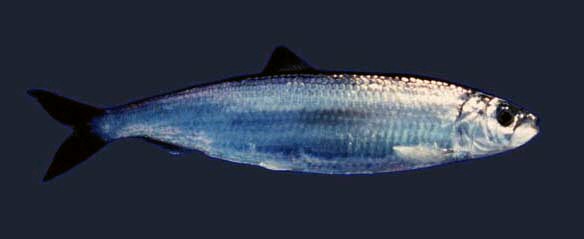Atlantic Herring
Clupea harengus

Physical: The Atlantic herring is one of 200 different species of herring worldwide. It ranges in color from steel-blue to greenish-blue. They have translucent white fins and a silver belly and sides. Adults grow to around 17 in (45.7 cm).
Habitat: Range across the North Atlantic. In North American, this spans from Labrador to North Carolina. They are a marine and brackish water fish, found along the coast and out to the continental shelf. Schools will migrate from coastal breeding grounds and overwintering habitat to feeding grounds in open water.
Feeding: Herring are filter feeders. They primarily feed on zooplankton and copepods, coming up to the surface at night to follow the zooplankton. Herring are also an important prey species for migrating marine mammals, seabirds, and other fishes.
Breeding: Atlantic Herring will migrate to spawning grounds in shallow coastal waters with rock, gravel, or sand bottoms. Females lay between 30,000-200,000 eggs. These eggs then stick to the seabed in long strands, sometimes piled so densely that they smother other eggs. Different herring populations spawn at different times, but in New Jersey they spawn from September through November.

Sign up for email or connect through social media.